|
|
Particle Physics |
TEXT SIZE: A A A |
-
IHEP conducts accelerator-based particle physics research using the Beijing 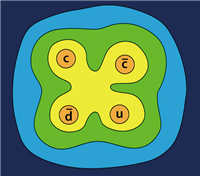 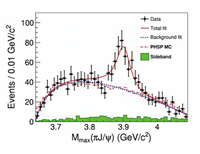 | | In the winter of 2012 - 2013, BESIII began a dedicated study of the Y(4260) particle. As a striking and unexpected first observation from this new study, the BESIII collaboration reported the existence of a new particle, the "Zc(3900),” that appeared in Y(4260) decays. | Spectrometer (BESIII), which is a large detector installed at BEPCII. At the same time, IHEP is also involved in many international experiments in high energy physics. -
In October 1988, BEPC accomplished successful electron and positron collisions, which opened up broad prospects for our research in particle physics and SR applications. In 2011, the peak luminosity of the Beijing Electron Positron Collider (BEPCII) was 56 times higher than that of the BEPC before its upgrade. The long-term and stable operation of BEPC has made it possible to obtain the largest data samples of J/ψ, ψ(2S), and ψ(3770) in the world. In February 2010, the BESIII Collaboration announced its first batch of physics results by analyzing the 100 million ψ’ events accumulated from the upgraded Beijing Electron Positron Collider (BEPCII). -
The BES Collaboration has produced a large number of physics results, including the | 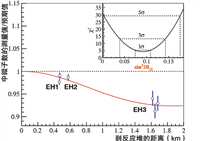
| | On March 8, 2012, the Daya Bay Reactor Neutrino Experiment announced the discovery of a new type of neutrino oscillation.The Daya Bay collaboration’s first results indicated that theta13, expressed as sin22θ13, is equal to 0.092 plus or minus 0.017. | precise measurement of the tau mass, precise measurements of hadron production in the energy range of 2-5 GeV, and the discovery of a new particle, the “X(1835).” In addition, the number of BES experimental results cited by the Particle Physics Booklet (PDG) in its 2010 edition reached nearly 600 items. In March 2013, the BESIII collaboration reported that the Y(4260) particle decays to a new, and perhaps even more mysterious, particle named the "Zc(3900).” -
The construction of the Daya Bay Reactor Neutrino Experiment has now been completed. This neutrino oscillation experiment, designed to measure the mixing angle θ13, represents the largest scientific cooperative project between China and the USA. | 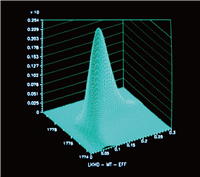
| 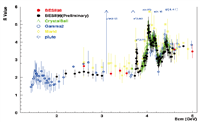
| 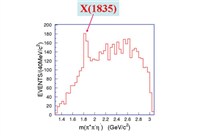
| | The precise measurement of the τ lepton mass was very important for the verification of lepton universality in the Standard Model. The result reduced the mass value by three standard deviations and the uncertainty was reduced by a factor of 10. | BES achieved precise measurements of 2-5 GeV hadron reaction cross sections. The experiment improved the precision of the Fine Structure Constant α (Mz2) by a factor of two and greatly improved the prediction accuracy of the Standard Model for the Higgs mass. | In January 2006, a new resonant state was observed by the BESII experiment and confirmed by the BESIII Collaboration. It was named X(1835) and was taken as a possible proton-antiproton bound state by PDG 2006. |
| |
 |
 |
|
|


